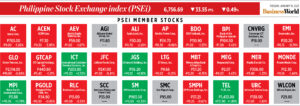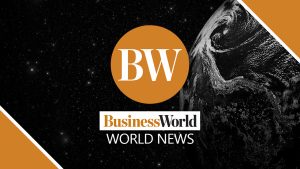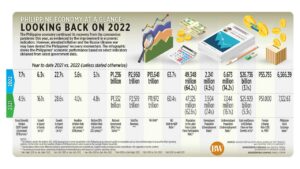Manufacturing PMI expands in Sept.

By Luisa Maria Jacinta C. Jocson, Reporter
MANUFACTURING ACTIVITY in the Philippines expanded in September, driven by resilient domestic demand and growth in new orders, S&P Global said.
The S&P Global Philippines Manufacturing Purchasing Managers’ Index (PMI) rose to 50.6 in September, a turnaround from the 49.7 contraction in August, reflecting an improvement in the health of the manufacturing sector.
“September PMI data signaled renewed growth across the Filipino manufacturing sector as new orders emerged out of contraction territory, thereby supporting a quicker expansion in output and a fresh rise in staffing levels,” Maryam Baluch, economist at S&P Global Market Intelligence, said in a statement.
A PMI reading above the 50 mark denotes improvement in operating conditions, while a reading below 50 signals deterioration.
However, Ms. Baluch noted the pace of growth is still “historically subdued,” indicating the sector remains weak.
“Moreover, latest data suggested that growth was supported by the domestic market as export sales fell for the first time in nine months,” she added.
In September, the Philippines had the second-highest PMI reading among Southeast Asian countries with available data. It was just behind Indonesia (52.3) but ahead of Myanmar (50.1). Meanwhile, Vietnam (49.7), Thailand (47.8) and Malaysia (46.8) all recorded contractions in September.
The headline PMI measures manufacturing conditions through the weighted average of five indices: new orders (30%), output (25%), employment (20%), suppliers’ delivery times (15%), and stocks of purchases (10%).
S&P Global noted the latest PMI survey data showed a renewed expansion among Filipino manufacturers at the end of the third quarter.
A modest rise in new orders was seen in September, thanks to improved demand conditions and new clients.
“However, latest data also revealed a fall in new business from abroad, thereby marking the first month of contraction in the year-to-date. Moreover, the rate of decrease was solid overall and faster than the historical average,” S&P Global said.
The increase in factory orders was mainly driven by domestic demand, with the pace of growth accelerating from the 12-month low seen in August.
S&P Global noted manufacturers also ramped up hiring in September, ending three months of job cuts. However, the pace of job creation remained “marginal,” it added.
“Despite firms seeing their business requirements rise and in turn increasing their workforce numbers, backlogs of work fell for the third month running in September, and to the greatest extent in seven months. The data thus suggested that there is still spare capacity within the sector,” S&P Global said.
Manufacturers in the Philippines also showed “diverging trends in inventory holdings” in September.
“While stocks of finished goods increased amid anticipation of greater demand in the coming months, pre-production inventories fell in September, with companies often utilizing their stocks to meet current demand requirements,” S&P Global said.
It noted that stocks were depleted at the fastest rate in nearly three years. “The fall in stocks of purchases also aligned with a stagnation in purchasing activity, thereby ending the period of expansion in input buying that began in September 2022,” it added.
The latest data also showed that cost pressures were generally subdued despite selling prices rising at the fastest pace in four months.
“Despite increasing material, fuel and supplier costs exerting pressure on operating expenses and pushing up selling prices at a faster pace, both input prices and output charges rose at historically muted rates,” Ms. Baluch said.
Manufacturing firms reported weaker sentiment for the next 12 months, although they were still generally optimistic.
“Looking ahead, sentiment slipped to a 15-month low in September and was historically muted amid some concerns of whether demand can be sustained. Nonetheless, 40% of panelists anticipate growth in output in the year ahead,” it added.
Ms. Baluch noted that global headwinds weighed on overall growth in September, with many firms concerned over the sustainability of future demand.
ING Bank N.V. Manila Senior Economist Nicholas Antonio T. Mapa said that the uptick in domestic orders helped push the Philippines’ PMI back into expansion mode.
“Domestic demand helped offset slowing exports orders. Another positive was the pickup in employment as manufacturers geared up for upcoming holiday demand,” he said in a Viber message.
Rizal Commercial Banking Corp. Chief Economist Michael L. Ricafort also noted that the improvement in output was due to the “seasonal increase in manufacturing, production, and importation activities in the third quarter in preparation for the holiday season.”
However, Mr. Ricafort noted that persistent inflation and high interest rates weighed on manufacturing firms’ operations.
Headline inflation may have settled at 5.4% in September, according to a BusinessWorld poll of 17 analysts. This is at the low end of the 5.3-6.1% forecast range of the Bangko Sentral ng Pilipinas (BSP).
The local statistics authority is set to release September inflation data on Oct. 5, Thursday.
From May 2022 to March 2023, the Monetary Board has raised rates by 425 basis points. It kept its benchmark policy rate at a near 16-year high 6.25% for four straight meetings.




